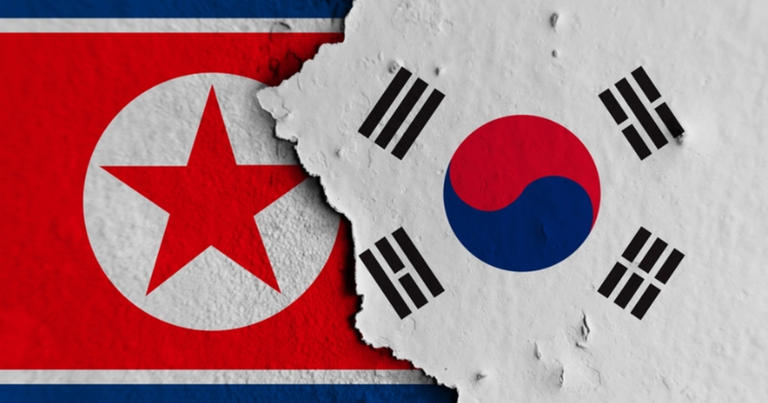Tensions Escalate As North Korea Accuses South Korea Of Drone Incursions.
Tensions between North and South Korea have surged once again, with North Korea accusing its southern neighbour of flying drones into its capital, Pyongyang. The North claims that these drones scattered propaganda leaflets over the city, in what it describes as a deliberate provocation, warning that such actions could lead to “armed conflict and even war.”
On Friday, Pyongyang issued a stark warning, ordering its border troops to be prepared to open fire. In response, South Korea stated it was fully prepared to defend itself, with a stern message that any threat to its citizens would mark the “end of the North Korean regime.”
The situation intensified on Tuesday when North Korea blew up sections of two key roads—Gyeongui and Donghae—that had previously connected it to the South. This followed the North’s earlier threats to sever ties, and further heightened the stakes in the ongoing stand-off.
Adding to the escalating rhetoric, the North Korean regime claimed that 1.4 million young people had applied to join or re-enlist in the army, a move seen as a demonstration of solidarity in response to the perceived provocation.
These developments are part of a broader escalation in tensions that have been simmering for months. In January, North Korean leader Kim Jong Un declared South Korea as the regime’s number one enemy, marking a shift in the region’s fragile relationship.
Allegations of Drone Incursions
On 11th October, North Korea’s foreign ministry accused the South of sending drones to Pyongyang under the cover of night for two consecutive weeks. The North alleges that these drones dispersed leaflets containing “inflammatory rumours and rubbish,” aimed at destabilising the regime.
Kim Yo Jong, the influential sister of Kim Jong Un, issued a direct warning to South Korea, cautioning of “horrible consequences” if these alleged drone flights continued. She claimed there was “clear evidence” that the South’s military was behind the provocation.
North Korea released images, purportedly showing drones in the sky and leaflets on the ground. However, the claims remain unverified, and there is no independent confirmation of the alleged incidents.
While South Korea initially denied the accusations, its Joint Chiefs of Staff later stated that they could neither confirm nor deny the North’s claims. Local speculation has suggested that activists, rather than the South Korean government, may be responsible for sending propaganda into the North, with reports indicating that balloons have previously been used for such activities.
Park Sang-hak, leader of the Free North Korea Movement Coalition, dismissed North Korea’s allegations, stating, “We did not send drones to North Korea.”
North Korea’s Military Response
In a show of force, Kim Jong Un held a high-level meeting with military chiefs and security officials on Monday, outlining plans for immediate military action. According to the North’s state news agency, KCNA, Kim discussed “the operation of the war deterrent and the exercise of the right to self-defence.”
Following this, South Korea’s Joint Chiefs of Staff warned that North Korea could stage “small-scale provocations,” such as further explosions on the roads connecting the two countries.
The destruction of the Gyeongui and Donghae roads—the first physical link between the two Koreas—serves as a symbolic gesture, underscoring the rapid deterioration of relations between Pyongyang and Seoul.
As tensions continue to mount, the world watches closely, hoping that the situation can be de-escalated before it reaches a dangerous tipping point. Both sides remain on high alert, with the possibility of further provocations looming large.



